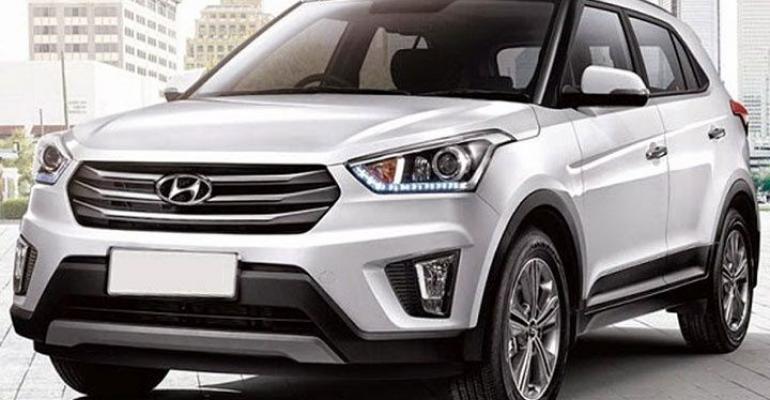SANTIAGO, Chile – Moves to curb dangerous levels of pollution from vehicle emissions will boost demand for new cars in Chile, just as the country’s auto market is emerging from a slump, officials predict.
The ongoing issue of poor air quality in the capital, Santiago, has prompted lawmakers to take dramatic action to limit the use of older cars on the city’s streets as part of a package of measures designed to highlight the commitment to beat the smog.
As of 2020, authorities plan to introduce a winter weekday ban on older cars. Between May and August, cars acquired before 2012 would be banned from operating in Santiago one day a week on a rolling basis (depending on the final digit of their registration). The restriction, mirroring controls on the city’s dwindling number of cars without catalytic converters, is expected to affect 58% of the city’s 1.8 million vehicles.
The Chilean government hopes the restrictions will persuade drivers of the estimated 270,000 older cars within the 6.1 million-resident city to replace them with newer models over the next four years. Cars sold in Santiago since 2012 already must comply with European Union Euro 4 emissions standards.
“The key thing to understand is that the vehicle ban is going to accelerate the replacement of vehicles by cleaner vehicles,” Marcelo Mena, Chile’s vice minister-environment, tells WardsAuto.
That should be welcome news for the country’s car dealers. A slowdown in the economy (the World Bank is predicting GDP growth of just 1.9% in 2016 and 2.1% in 2017), a sharp depreciation of the Chilean Peso between 2012 and mid-2015, and rising interest rates saw new-car sales slump 16.4% in 2015 to 282,232 units, down from a peak of 378,240 in 2013, according to ANAC, the Chilean car-industry association.
Encircled by soaring mountains, dust and smoke naturally accumulate in the city, especially in winter months when the pollutants are trapped under a plug of cold air. The introduction of motor vehicles and heavy industry and rapid population growth has increased air pollution to critical levels. By 1990, Santiago was as much a byword for choking smog as Beijing is today.
Air quality has improved significantly over the past two decades, thanks to the introduction of catalytic converters, cleaner diesel-fuel standards and the refitting of major industries to use natural gas. But dust and noxious gases still can build up, leading to critical episodes between May and August.
Authorities are tackling the problem not only with the planned restrictions on older cars but also with a new decontamination plan taking effect in May. Measures include a permanent ban on burning firewood and agricultural materials in the greater Santiago region and tougher emissions standards for industry flues and diesel generators.
But the focus of the plan will be on vehicles, which Chile’s environment ministry says account for 30% of emissions of breathable particulate material and more than 80% of oxides of nitrogen emissions. Given the poor state of Santiago’s public transport, the emphasis will be on cleaner operation of the city’s buses, trucks and cars rather than reducing the total number of journeys.
Starting in 2020 (2018 for city buses), all vehicles operating in Santiago will have to comply with the EU’s tough new Euro 6 emissions standards, a rule intended in part to encourage the purchase of new, cleaner cars.
The government’s auto-sales projections are based on the response to the 1991 lifting of restrictions on cars fitted with catalytic converters, which led to rapid renewal of the car fleet in Santiago.
But while these projections appear positive, automakers should not take higher sales for granted, analysts warn. A generation ago Chileans still were emerging from the shadow of military dictatorship under President Augusto Pinochet, who ruled until 1990, and compliance with the new rules might be patchy.
Recent protests have shown Chileans today are more willing to challenge authority, says Andres Hernando, a researcher at Centro de Estudios Publicos, a think-tank. Even compliance with existing vehicle restrictions is lax, and drivers probably will be more willing to flout the new rules than they were in the past, he says.
Even if many choose to replace their vehicle, it is not clear this will increase new-car sales. Given the weak state of the economy, many drivers may opt for a newer second-hand model to beat the ban, while older vehicles may be marketed outside the capital, dampening demand, he warns.
“We are not expecting a boom in sales as a result,” says Rodrigo de la Torre, general manager of Kia Chile, one of the country’s most popular car brands.
But any increase will be welcome and the new anti-pollution rules come as analysts predict other economic factors will make Chilean consumers more likely to buy a new car.
According to a report by Spanish bank BBVA, although economic growth remains weak, the peso has strengthened against the U.S. dollar since summer 2015, while lending rates have fallen ahead of expected interest-rate cuts in the New Year.
Finally, consumer confidence has been building steadily, albeit from low levels, as many look forward to the anticipated election of a more business-friendly government in November’s presidential elections (the current head of state is Michelle Bachelet, a socialist).
ANAC figures show Chileans had bought 273,878 new cars through the first 10 months of 2016, up 8.5% from the same period year-ago. Sales are expected to hit 300,000 in 2016, a 7% increase year-on-year, according to the BBVA report.
With these trends likely continuing in 2017, economist Cristóbal Gamboni, one of the report’s authors, expects another significant jump in Chilean new-car sales in 2018 to between 320,000 and 330,000.




